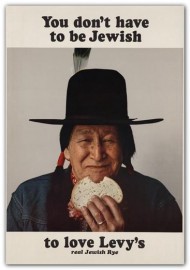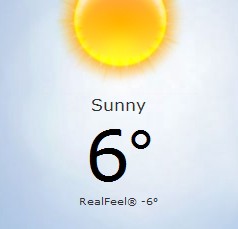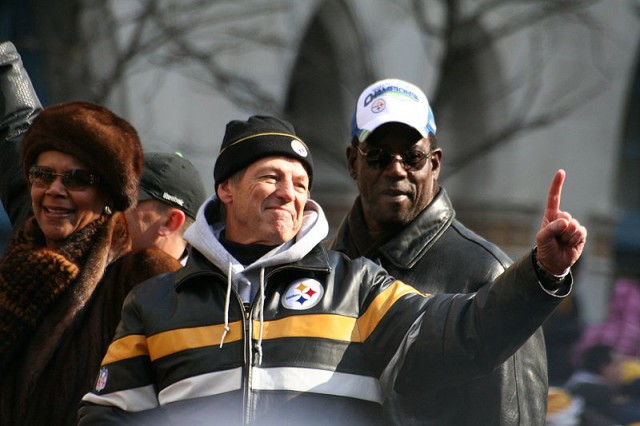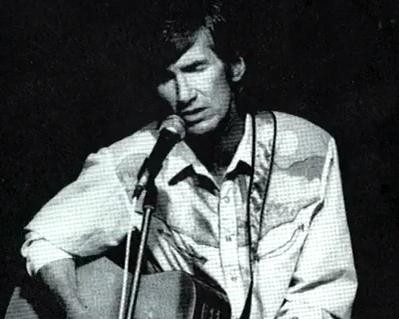This is Russia's Fifth Major Terrorist Event in a Year
Today’s rather horrific bombing at Domodedovo airport in south Moscow — in the baggage claim, it looks like — is Russia’s first act of terrorism in ten months. (Unless you count the Chechen Parliament attack in October. Or the Vladikavkaz bombing in September, or the bombing in Stavropol in May.) There are more! (No really. Anyone remember Dagestan? Ingushetia?)
Bitey Monkey Busts Out Of Jail
“A marauding monkey that terrorized resort towns in central Japan last year by biting nearly 120 people has escaped captivity. Officials in Mishima City said the monkey slipped out of the government-run nature park it had been kept at since its capture last October when a keeper was cleaning its cage. The city published an emergency notice urging residents to lock their doors, though no new attacks have been reported.” The monkey is named “Lucky.”
Jack LaLanne, 1914-2011
Fitness legend Jack LaLanne has gone to that Great Gym In The Sky. Here is what his typical day was like.
He ate two meals a day and shunned snacks.
Breakfast, following his morning workout, usually included several hard-boiled egg whites, a cup of broth, oatmeal with soy milk and seasonal fruit. For dinner he took his wife, Elaine, to restaurants that knew what he wanted: a salad with raw vegetables and egg whites along with fish — often salmon — and a mixture of red and white wine. He sometimes allowed himself a roast turkey sandwich, but never a cup of coffee.
So nearly 80 years of that and you still die anyway? Thanks, but no thanks! I’d rather a good forty-year run of booze, cigarettes, caffeine and hot wings and never going to the gym than 90-odd whatever years of egg whites and salad. I mean, different strokes and everything, but we all end up in the ground at the end. You might as well liver. (Haha, get it?)
On Ike Quebec
Here’s a nice appreciation of the underrated — and, really, underknown — tenor saxophonist Ike Quebec. On a day like today, his rendition of “It Might As Well Be Spring,” may be just what you need to warm yourself up.
Phyllis K. Robinson, 1921-2011

“Ms. Robinson was paired with an art director, Bob Gage, and together they produced ads for marketers like Orbach’s department store, Polaroid instant cameras and Levy’s breads. For Levy’s Real Jewish Rye, there were colorful posters. Some showed a slice of rye disappearing, bite by bite. The headline: ‘New York is eating it up!’ Other posters showed New Yorkers of various ethnicities eating sandwiches. The headline, which entered the vernacular: ‘You don’t have to be Jewish to love Levy’s Real Jewish Rye.’”
— Longtime DDB copywriter Phyllis K. Robinson is dead. But those Levy’s posters will live forever.
Weather, We Have Some

It’s a mite chilly out there, kids, bundle up. The good news, though, is that they’re talking snow later in the week. Yes! More snow! Just what we needed! God, this is like the greatest winter ever, right? RIGHT? Oh my Lord I am cold.
What We Learned This Week

• How our Pentecostal Congress grows
• Who would be Donna Summer if he only had a penis
• How to keep up with the Internet
• What is the most awful-sounding disease out there now
• How to survive for a month without drinking
• Which new indicators we use to convey musical fame
• How the anonymous novel about Barack Obama ends
• Why you should never call an emergency locksmith in New York City
Photo by Bob Jagendorf, from Flickr.
War Is Heck

Before it became America’s most wholesome and family-oriented violence-delivery medium and a decade or so after it ceased to be a simple sport, the NFL was, briefly, war. This wasn’t so very long ago — then as now, the United States was intimately-unto-inextricably involved in two wars of the actual-going-on-thing variety. And of course the NFL wasn’t so much war as it was a violent professional sport on television, but it’s easy to see how the NFL’s marketing people — who cut together a series of TV promos featuring Edwin Starr’s “War (What Is It Good For?)” that left in the funky-dramatic music but removed every lyric except for the word “war” — could get it twisted. It’s not so much that the language of football is full of careless war metaphors — the blitzes and rallied troops and grunts-in-trenches and so trivially on — as it is that the contemporary NFL is designed to be misunderstood and consumed in the same way as the nation’s second-favorite combat-related enterprise. Which would be actual combat.
It’s worth mentioning, I guess, that the NFL’s approach to marketized combat isn’t actually more egregious than the others you can find during the average NFL broadcast. There are the actual soldiers in the actual Army commercials, for instance, but they’re all splashing through obstacle courses and helping each other up meaningfully and persevering and fear-taming in extreme close-up and hand-held low angle shots and pounding through smash cuts before emerging on the other side of it all as Army Strong Individuals. Gary Sinise narrates that one, and Keith David does the voice-over on the Air Force commercials that make being in the Air Force look kind of like working for a space-based, mission-control version of “CSI: Miami.” And there are the ads for the video game “Call of Duty” in which a bunch of ordinary people (and a few celebrity cameo players) get their war on in slow motion over “Gimme Shelter.” Explosions bloom like big dumb poppies, someone dressed like a construction worker shoots a machine gun from a helicopter, a deli-counter guy with a mustache struts across the screen expressionlessly emptying the clips of his twin pistols, a pudgy gamer-looking lady kicks in a door and fires a shotgun, and what is either an animate lump of self-satisfied cookie dough or Jimmy Kimmel shoulders a bazooka. The tag line is “There’s A Soldier In All of Us” and it’s a thousand times dumber than anything the NFL is responsible for.
If all the visions of combat or soldier-hood — as a high-risk, high-reward method of personal discovery or as an epic blast — are incomplete or irresponsible or just kind of fucking gross in their kidulty callowness, they’re also commercials and so yeah, of course they are all those things. But if they seem especially at home during NFL broadcasts, it’s because of the ways in which their mild fraudulences and elisions and all that willful sentimental muddling fit with the way the NFL presents itself. Some of this is a result of changing times, of course — maybe the NFL was once content to market games as friendly-ish brawls, but a more general rhetorical inflation has a lot to do with the way in which those boys-will-be-boys scuffles were transformed into epic darkling plain warfare. If NFL players would be physically exhausted and emotionally wrecked by the NFL’s proposal to add two more games to the regular season schedule, fans would at the very least probably feel kind of wrung out after another couple weeks of steadily elevating rhetorical stakes — “these two teams really just want to literally actually murder each other at this point in the season” and so on — as well as tingly-armed from all the loaded potato skins and such. Burnout would seem to be a risk, that is, if the NFL and the networks that make bank off it did not so elegantly understand how to market exhausting conflict.
The NFL would never be able to pull off its strange, successful split screen routine — football games as The Thing That Brings Americans Together and football itself as exalted bloodsport — were it not able to utilize the power of distance so well. If there’s something kind of squirm-inducing about actual combat being presented as either the personal fulfillment gambit of Army commercials or the massive multiplayer kick of “Call of Duty,” the way in which we do and do not see our actual ongoing wars has very little to do with combat. We hear about strategies and tactics, about the impact of developments upon elections and which generals or staffers are de- or ascendant, which kind of crowds out the terrifying stuff. If it’s about narratives, it’s also about the characters in those narratives.
In the same way that we know far more about General David Petraeus than we do about what it’s like to work for him — and for the same reasons that Peter Baker’s lengthy New York Times article on the fallout from the economic collapse wound up being about Larry Summers being a dick to (anonymous) underlings and the tenor at economy-related White House meetings — we will hear of coaches redeemed and rebuked and so on this weekend. These are redeemed eccentrics like Chicago Bears offensive coordinator Mike Martz — an offensive genius with brilliant St. Louis Rams teams at the beginning of the last decade and a stubborn Colonel Kurtz type calling back-to-back end-arounds from his massive playbook for crummy teams at the end of it — and poker-faced tacticians like Pittsburgh Steelers defensive coordinator Dick LeBeau. Rex Ryan’s Big Personality and Lovie Smith’s Quiet Dignity and so on. All the while, on the field, the infantry does its thing to the point of mania — Jets linebacker Bart Scott fumes with incoherent rage, promises vengeance on imaginary haters; Bears quarterback Jay Cutler refuses to make eye contact and mumbles what kind of sounded like it was maybe a “go fuck yourself.” If I had to choose between interviewing Rex Ryan or interviewing Bart Scott, I know what I would choose to do. But what Bart Scott is doing — and what he does to himself to make himself do what he does — is at the heart of what the NFL doesn’t want to talk about. That madness, more than Martz’s intermittent genius or LeBeau’s structured brain, are what makes the NFL go, and what makes people watch. But that crazier stripe of blood-in-the-eye genius — and the conditions, the manifold exhaustions and exertions that necessitate it — is more complicated and scarier and tougher to sell.
“It’s war,” Kellen Winslow Jr. once said back when he was at the University of Miami. “They’re out there to kill you, so I’m out there to kill them… I’m a fucking soldier.” It was a stupid comment, because Kellen Winslow Jr. is in fact not a soldier but a wealthy tribal tattoo aficionado with a poignantly overstated sense of his own importance that astonishes even by the standards Jeremy Shockey set for vain University of Miami tight ends. What was surprising about it was not that Winslow would say something dumb after a football game — he says dumb things all the time — but that he was immediately and roundly chastised for it. (Even Deadspin, which was admittedly not yet the cock-shot juggernaut it is today, got huffy about it) But going back and reading Winslow’s apology for his remarks — “As for my reference to being a soldier in a war, I meant no disrespect to the men and women who have served, or are currently serving, in the armed forces. I cannot begin to imagine the magnitude of war or its consequences.” — it’s hard not to at least feel a twinge of sympathy. It wasn’t a new metaphor, but metaphors aren’t Kellen Winslow Jr.’s job.
And the picks, right. The ridiculous picks. Is Thailand better than Canada? In terms of readily available high quality Thai food, the answer is yes. In terms of recent incidents of sad political violence, I guess you’d have to say Canada has the edge. For willingness to eat spicy papaya salad for breakfast, the answer is yes, Thailand is better. But in terms of producing currency that beats me soundly when it comes to predicting football outcomes, Thailand is frankly kind of meh. Which is fine, since my predictive abilities barely even qualify as meh, if we’re being honest, and I should probably be happy to tie any nation’s currency when it comes to picking football outcomes against the spread. There’s no way I can possibly finish ahead of my inanimate counterpart at this point. So I am saying (reiterating, really) something along the lines of fuck it. I’m picking for pride, and with ignorance. I suspect this is the sort of behavior that could lead to a job offer from Al Davis.
Second Round and Overall Records: David Roth: 1–3 (116–119–9); King Bhumbibol The Royal Thai Baht: 1–3 (122–113–9)
Sunday, January 23
• Green Bay Packers (-3.5) at Chicago Bears
, 3:05pm — DR: Green Bay; KBTRTB: Chicago
• New York Jets at Pittsburgh Steelers (-3.5), 6:35pm — DR: New York Jets; KBTRTB: New York Jets
David Roth co-writes the Wall Street Journal’s Daily Fix, contributes to the sports blog Can’t Stop the Bleeding and has his own little website. And he tweets!
Photo by AxsDeny, from Flickr.
The Highly-Authentic Ghost of Townes Van Zandt
by Bethlehem Shoals

The twelfth highest-grossing film in America this past week was Country Strong. In it, Goop plays Kelly Canter, a boozed-out, decrepit country star just looking for another chance. Tim McGraw tackles the role of James Canter, the long-suffering cardigan that also happens to be her husband, manager and occasional tormentor. Leighton Meester is Chiles Stanton, a sweet young thing making the leap from pageants to the music biz. Garrett Hedlund is Beau Hutton, a dreamy rehab janitor who lives to play the honky-tonks. It’s the second film from Shana Feste — not a stage name — and Tobey Maguire snagged a production credit.
I saw it recently, on the smallest, dingiest screen at Seattle’s nicest multiplex, with the most vocal audience I’ve been a part of in my four years here. Country Strong isn’t the camp-fest my wife had hoped for, nor is it the cut-rate Oscar bait it sometimes imagines itself to be. It’s Crazy Heart, if Jeff Bridges had only been looking for an excuse to sing on camera; Nashville, if the caricatures were smugly two-dimensional; The Rose, with sheer volume replaced by churlish intimacy. Take a melodrama, drain it of all good, hackneyed sense, and shoot it simply, in natural light, and what’s left? Here the reader who has yet to see the film, and intends to, might stop reading.
Beau and Chiles fall in love, but only after she stops sleeping with James Canter, and only with the blessings of Kelly, who had been sleeping with Beau. While not in love with Beau, Kelly believed they had some spiritual bond based largely on soulful staring. Everyone is in love with each other, and it’s causing problems, and yet somehow, one of Gwyneth’s last pearls of wisdom is that we should all “fall in love with everything.” That line was big on Twitter.
Another part of this approachable clusterfuck is Chiles revealing herself to be more than a painted brat who will stop at nothing to conquer the charts. It has something to do with her writing a decent chorus; mostly, we go along with it because Beau says so, and he’s the source of all that’s credible in the film. Later, we find out that Chiles is white trash and ashamed of it, which is an important step. But in the epilogue, we see her for the first time without her make-up, and according to Roger Ebert, she’s more beautiful than ever.
By this point, Kelly has offed herself after a triumphant comeback show in Dallas, leaving a note about how happy she is. Country Strong, indeed. I’m not sure, though, it was all that different from the ending of Black Swan?
A gut-yanker that’s neither good nor heroically bad, Country Strong is absolutely inconsequential, if not hollow. And yet a week later, I find myself still thinking about it, just because of one stray exchange about mordant, depressive singer-songwriter Townes Van Zandt. After two shows, McGraw’s character attempts to explain to Chiles that her and Beau’s are already stars to be reckoned with.
James (McGraw): The Austin Statesman’s saying that you’re the next Carrie Underwood, and he’s the next Townes Van Zandt.
Chiles (Meester): Who’s Townes Van Zandt?
James: He’s a singer-songwriter.
Chiles: Was he famous?
James: In some circles. But not as famous as Carrie Underwood.
There’s really no reason for Townes Van Zandt to show up in this movie, especially if it’s out to establish its country cred. But there he is. And with that, the balance of authenticity is thrown all out of wack, never to recover. Suddenly, remembering who you are and where you came from — the honesty that every good country fable seeks to attain — is supplanted by the wishy-washy possibility of finding yourself.
The patently absurd contrast between Carrie Underwood and Townes Van Zandt is a bit like being offered your choice of white wine or Percodan with dinner. Say what you will about the Piedmont brogue Colin Farrell affected for his character in Crazy Heart; at least that movie got the binary right. Van Zandt isn’t “real” in the way Johnny Cash or Merle Haggard are — he’s not even country per se, and he has as much in common with Dylan, Lightnin’ Hopkins or Fred Neil as Willie or Waylon.
But once the comparison’s made, Hedlund started to sound to me like a schmaltzy, diluted Townes — sensitive instead of wounded, in a way that makes his songs suited to either a first kiss or a break-up. (What’s the difference, anyway?)
Hedlund defines Meester, and fittingly, when we see the “real” her, she looks more like a liberal arts undergrad than the poor, scrappy girl from Tennessee. This makes zero sense, since growing up poor and Southern has always been the bedrock of authenticity in country music. Yet somehow, that side of Meester is incidental to her voyage of self-discovery. She may bond with Kelly over this shared experience, but in the end, there are things more universal and meaningful than roots. It’s like she has dropped out, not broken free.
Kelly, too, may have her humble beginnings to thank for her ambition, her insecurity and her pluck, but even she falls under the spell of the Hedlund/Van Zandt orbit. Or, rather, the film lurches at the chance to make her into that kind of character. Country Strong opens with the two of them hangin’ out in her room at the rehab center, strummin’ her beat-up guitar and seeing who can most adeptly compose a song out of thin air. I get that the well-loved acoustic is a Willie Nelson reference (half the guitars in the movie look like that), and there’s a certain campfire quality to the scene. At the same time, though, it also recalls the communal Nashville “guitar pulls” where Van Zandt, Guy Clark, and Mickey Newbury, among others, would swap songs and extend their ideas. There are no publishing rights in this place.
Chiles and Beau also use songwriting as a proxy for courtship, foreplay and eternal bond, and plan to run away together to the coast where they will make music for themselves. At the film’s end, we are again a long way from pop production. But it’s Kelly Canter — poet, drunkard, a Romantic too fragile for this world — who only makes sense if the film throws in Townes Van Zandt. Otherwise, she risks being too, well, country. And certainly too strong for the ending to make any sense whatsoever.
Like the romantic entanglements in Country Strong, which nimbly manage to avoid the slightest trace of homoeroticism, these different forms of “real” deftly step all over each other without any sense of tension. It’s a decidedly awkward movie about a world that can rarely be bothered with that mood.
External to the film, and my reading of it, is yet another matter of cred. Feste has told numerous outlets that Kelly’s character was inspired by Britney Spears and Michael Jackson; this reduces her story to tabloid formula, using country music as a different costume, and more lurid disguise, for the overly-familiar. Yet at the same time, there’s this telling take from the LA Times, rebroadcast on the soundtrack’s official blog:
Paltrow’s latest role as a faded country singer is a gamble for an actress known more for art-house fare. But her upcoming CMA awards spot and other high-profile moves are a step in the right direction for building credibility.
That presents a question, of course, of whether playing the CMA’s — becoming, for one night, a real fake country musician — amounts to any kind of authenticity, or just cunning simulation that plays well on YouTube.
Country Strong was about the perils of fame long before it concerned itself, however unwittingly, with the fine lines of its setting. At the same time, at the register of marketing and fan reception, Gwyneth had to prove herself worthy of the role. Given the way the film turned out, I would have much rather seen an actual country diva play against type and tear herself apart, like a rhinestone-studded Dancer in the Dark. There’s no law that only the ladies of “art-house fare” can access deep feelings. And if the real challenge here wasn’t negotiating the terrain of country music, but making sure the costumes fit right, hell, Country Strong probably would have done a better job of fooling the audience without making Paltrow do all that heavy lifting.
Then again, even for Townes Van Zandt there were limits to authenticity. One of my favorites — and quite possibly his bleakest — is “Highway Kind,” which to my knowledge, appears on 1972’s “High, Low, and In Between,” and then one, maybe two, late-career live albums. This has always baffled me. For reasons that will take too long to explain, Townes protege Steve Earle was in the room when I made my first promotional appearance as an author. He had just finished a long-overdue record of Van Zandt covers, which he had decided would emphasize his idol’s less doomy side. Earle felt like Townes’s legacy had become remarkably one-sided; there was much more there than suicidal contemplation.
After we talked about baseball for a minute, I sensed an opening to asked a question that had bugged me for years: why did Van Zandt play “Highway Kind” so infrequently? “Well,” Earle said, “there are some places so dark that even he didn’t want to visit them again”. He made it sound like, even for Townes Van Zandt, music was imagination, escapism.
Then again, Townes trained a parrot to pilfer cough syrup and had a pet monkey that doubled as his bodyguard in the wilderness. Kelly Canter has a pet baby bird named “Loretta” that she nurses back to health at the rehab center. Presumably, something awful happens to Loretta when Kelly brings her to a biker bar and goes on a bender. But Country Strong tactfully drops the subject. What kind of sick movie kills baby birds, even off-camera?
Bethlehem Shoals is a founding member of FreeDarko.com. Pay attention to his book and FD’s art emporium.
Taj the Elephant Painted a Picture for a Woman Dying of Cancer
Remember, Taj, the oldest elephant in America, who died this week? (I hope you do, it was like 48 hours ago.) Remember that she liked to paint? Well, five-and-a-half years ago, her caretakers at Six Flags Marine World had her paint a picture for a woman named Lindsey who had pancreatic cancer. A month later, Lindsey died. She was 26.
Her husband kept the painting and his sibling put this video up on YouTube. You think of the guy looking at the painting, remembering that day at Six Flags. I think that’s Lindsey in the video. Or maybe it’s not. I don’t know. I’m a mess!
What is it about the animal-human interaction thing? It’s surely something about the reaching over boundaries. Communication and empathy in the face of the odds-against-it conditions. It’s about our essential aloneness in the world and endless struggle against that. Like, here we are, so alone and profoundly cut-off from everything else in the world. We’re all stuck inside our brains, unable to ever be sure what exactly anyone else is thinking — do they see the world as we do? Do they feel things that we feel? Are they not all robots programmed to trick me by some evil super-brain conducting a big Truman-Show deal from Skynet? I can never be totally sure. That last one’s unlikely, but the best we ever get is a guess. And it’s lonely. Even in a crowd of people. Even when we’re with the other people (if they are in fact, people) that we believe we know best.
So that guess becomes everything. Unless you believe in God, maybe. That, I could see, making people feel differently. But there’s the leap of faith, right? Same kind of thing, I’d think. Graham Greene seems to describe it like that: the best guess, the hope, is all we have. And the fact that we do sometimes have an experience that feels like connection. A conversation, and shared laugh, holding hands, or hand-parts, or whatever. Is he or she laughing for exactly the same reason that I am? Does he or she feel the same warmth on the skin? Probably not exactly,but you do at some point have to trust that other people, in their similarly cut-off bubbles, similarly trapped in their own brains, honestly empathize. Even in the face of so much evidence to the contrary. Like: everybody likes 30 Rock. That makes me feel very lonely and like everybody else is a robot programmed with a different sense-of-humor chip than whatever biological joke-receptors I have in my brain. All these robots, programmed to laugh at this show that I find so mediocre and not funny, except for Alec Baldwin. Why were all these robots programmed that way? And nobody likes Freeway as much as I do. What is wrong with everybody?
So we manufacture communication. Based in large part on the shared acceptance of our lonely state as thinking beings, we make up ways to send each other messages. They have to come in to our boxes or our shells or whatever through our skin or our eyes or our ears. But these messages are the most beautiful things in the world. Take this data however you do, process it, and see if it all closely jibes with whatever your experience is. If there’s even something close to a match, it feels better than anything else. (Except maybe, like, heroin. But I think that’s what Royal Trux was talking about when they said, “If you want to stare hard at the inside of your head for the rest of your life, well, baby that’s just fine with me.” And I don’t really think they were wholly recommending it as a lifestyle choice.) Because anything, any evidence that goes against the always-there terror of being totally alone and isolated in the world, that’s the best thing. And the people we find this the most with, we make them our friends, and if we’re lucky, our husbands or wives. And then maybe we have kids, and that can really offer something profound in this regard but that something doesn’t have as much to do with why watching a video of a woman with cancer putting her hand on an elephant’s trunk is so moving.
When we can make that connection with people that are not so apparently like us, that makes the whole miracle of it seem even better. It’s more rewarding in that way. People from different cultures playing soccer or sharing a candy bar or something, even when they don’t speak the same language. There’s a million movies and phone commercials that tap into this, right? And this is why I can’t even think about the The Curious Incident of the Dog In the Night-time, when the autistic boy and his dad agree that touching the extended fingers of each other’s hands means “I love you,” because the autistic boy doesn’t like any more physical contact than that. What’s a more explicit depiction of making a connection through the thick walls of our lonely human-brain shells?
So with animals, if we see communication and empathy bridging what seems like such an impossible, interspecies gap — how could we ever know what an elephant is thinking or feeling? — but then, there is the familiar gleam in her eye, and what looks to be a smile on her face….. And it makes it all a little bit more okay. Even that Lindsey and Taj are both dead and Lindsey’s husband probably feels a whole different sort of sadness and also maybe some deep beauty or love when he looks at the painting an elephant made for his wife.
